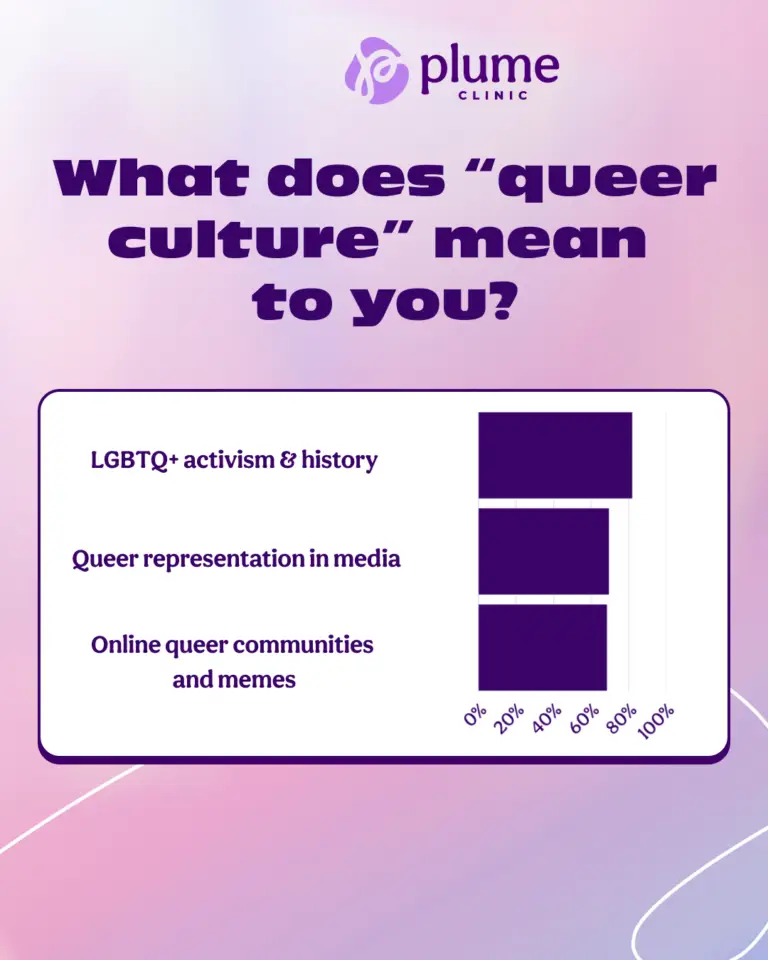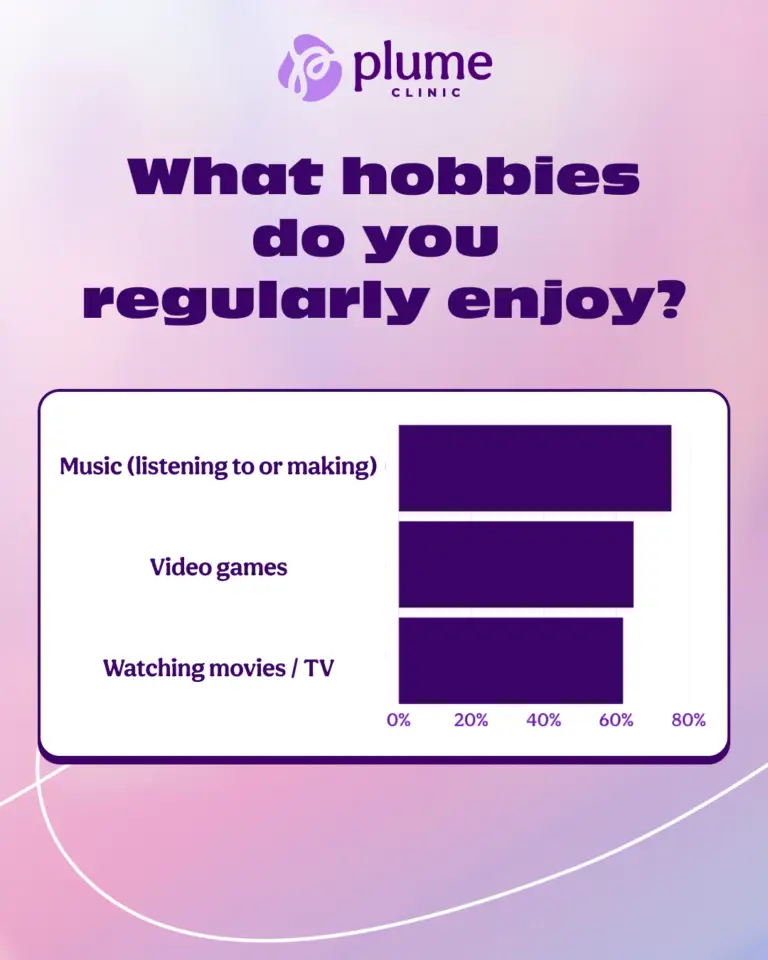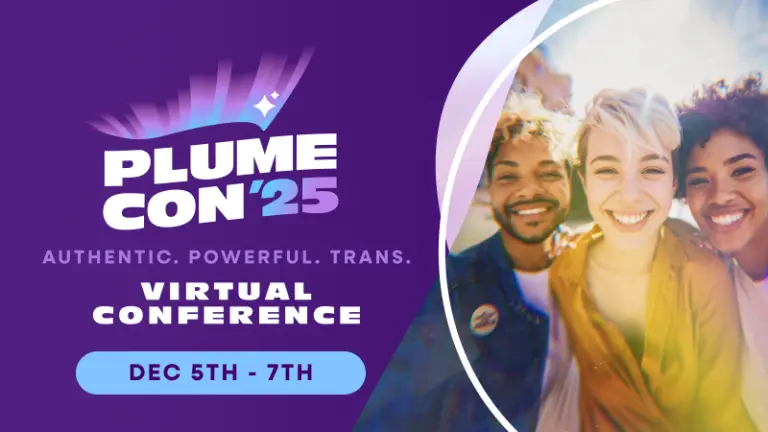1,360 trans and nonbinary people shared what’s trending in our community—from culture to connection.
LGBTQ+ activism, queer media, and online communities top the list for what defines queer culture in 2025.
Rock, alt, and punk lead as the favorite music genres, followed by pop and indie/folk.
YouTube and Discord are the go-to spaces for queer connection, creativity, and community.
Music, gaming, and art remain core ways the trans community expresses identity and joy.
Join thousands of transgender adults getting gender-affirming hormones with Plume Clinic.
What’s defining trans culture in 2025? We asked our community what “queer culture” means to them in our 2025 Trans Interest Survey. The results were clear: it’s built on history, representation, and connection.
LGBTQ+ activism and history led by a wide margin, showing that the fight for visibility and equality is still core to how our community defines itself.
Nearly as many respondents highlighted queer representation in media, where authentic storytelling continues to make a real difference.
Online queer communities and memes followed closely, reminding us that joy, humor, and solidarity are powerful cultural forces in their own right.

Beyond those top three, participants also pointed to queer fashion, art, and independent creators as vital expressions of identity — proof that trans and queer culture continues to shape the wider world’s aesthetics, language, and ideas.
The Soundtrack of Trans Joy
Music is a constant in our community — a creative outlet, a mirror for emotion, and a bridge between people.
Rock / Alt / Punk came out on top, a genre that’s always carried themes of defiance, individuality, and reinvention — values the trans community knows well.
Pop ranked second, showing that unapologetic self-expression never goes out of style.
Indie / Folk also earned strong support, with many respondents sharing that its intimacy and storytelling reflect their own journeys.

Across all genres, one pattern stood out: music made by queer artists is a major part of people’s listening habits. For many, supporting LGBTQ+ musicians isn’t just about taste — it’s about visibility, community, and connection
Where We’re Hanging Out Online
When it comes to digital life, the trans community continues to make the internet our home turf — building vibrant spaces of belonging, creativity, and learning.
YouTube ranked highest overall as a hub for trans creators, vloggers, educators, and entertainers.
Discord followed closely, serving as a digital living room for small queer groups and communities.
Instagram continues to be a platform for self-expression, art, and advocacy.

Outside of those, many respondents mentioned TikTok and Reddit, underscoring how trans people use social media not only to connect but to educate and influence broader conversations around gender, identity, and care.
What Keeps Us Inspired
When we asked about regular hobbies, we saw one clear throughline — creativity and connection drive trans joy.
Music led again as the most popular pastime, whether listening, writing, or performing.
Video games and watching movies or TV came next, with many respondents mentioning how immersive worlds and stories help them relax and imagine new possibilities.

Other favorites included art (painting, writing, photography), reading, and cooking or baking — all forms of self-expression and nourishment that highlight the full, rich lives our community leads.
What It All Means
Trans joy is trans culture. The data says what we’ve always known: trans and nonbinary people aren’t just participants in culture — we create it. From music scenes to meme culture, activism to art, our community continues to set trends, build worlds, and tell stories that connect to the heart.



